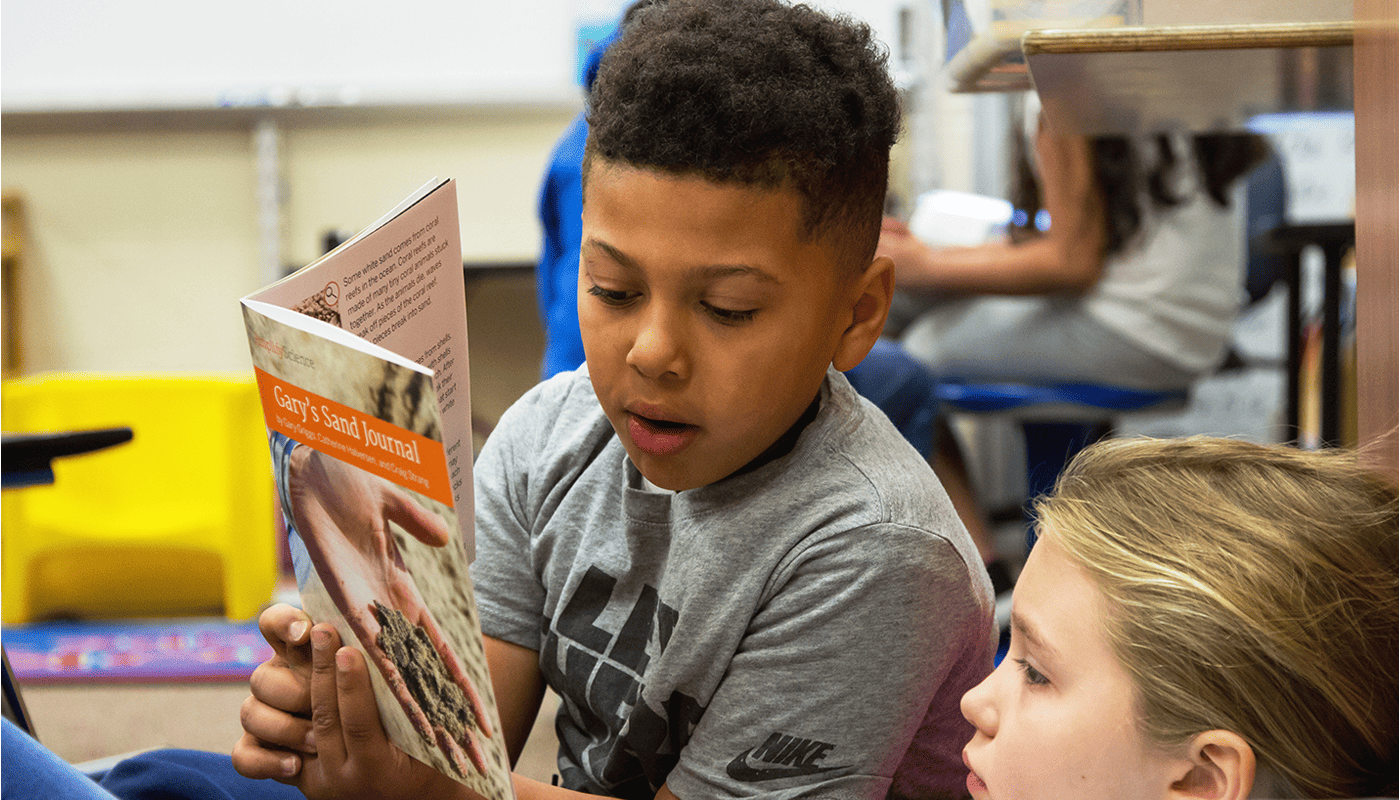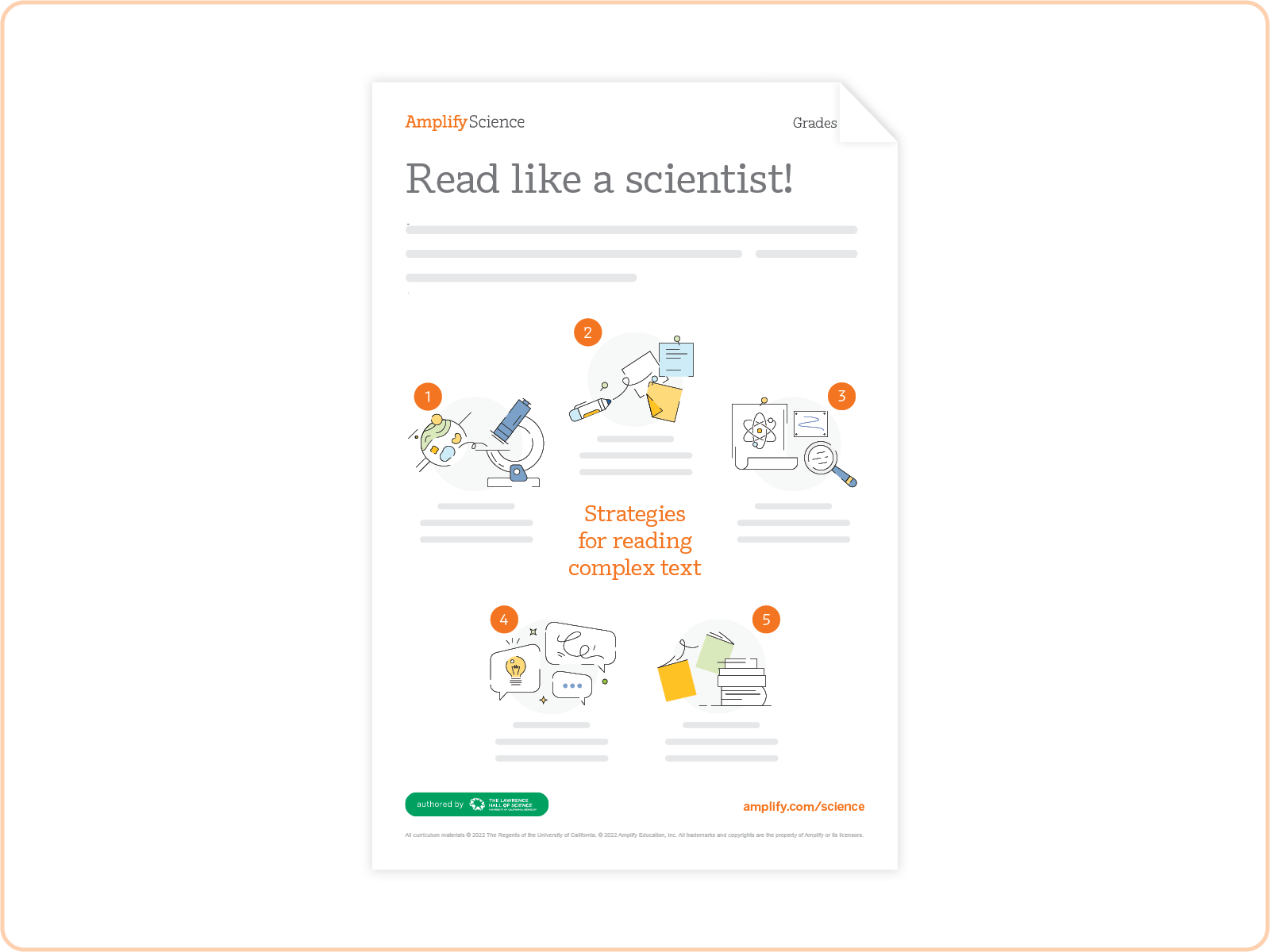
We often think of literacy and science as academic opposites. (ŌĆ£Physics for Poets,ŌĆØ anyone?)
But scientists canŌĆÖt do their jobs without reading, writing, listening, and communicating.╠²
ThatŌĆÖs why thoughtful science instruction is literacy-rich science instruction.
Language and literacy in science education: why it makes sense
All scientists use literacy skills in order to obtain, evaluate, and communicate information about the natural world. They use oral and written explanations and arguments to share their ideas. Scientists rely on claims, evidence, and reasoningŌĆöjust like anyone who needs to communicate or convince.
ŌĆ£Science needs literacy, and literacy needs content. So these two subjects are a natural fit,ŌĆØ says Rebecca Abbott, professional learning lead for the Learning Design Group at UC Berkeley’s Lawrence Hall of Science.
TheyŌĆÖre a natural fitŌĆöand when they converge, they enhance each other.╠²
Science and literacy integration helps students:
- Understand that reading and communicating are crucial to science.
- Develop ways of thinking that support the scientific approach.╠²
- Refine sense-making skills that are key to both disciplines.
- Find a great reason to readŌĆöthat is, to keep up with the latest scientific studies and discoveries!
Look ahead at the standards that guide instruction in grades 6ŌĆō8. YouŌĆÖll see that in several ways and places, literacy and science are integrated. That is, certain Common Core ELA standards intersect with the Next Generation Science Standards ().╠²
To cite just a few examples, the Common Core requires students to be able to:
- Cite text evidence to support analysis of science/technical texts. (RST6-8.1)
- Follow a multistep procedure. (as in an experiment) (RST6-8.3)
- Integrate quantitative information expressed both in words and visually. (RST6-8.7)
But we can start earlier than that. And we should. So what about science and literacy in the elementary classroom? Grades KŌĆō5 provide the opportunity to lay the groundwork for those skillsŌĆöeven for teachers not fully grounded in science instruction.╠²
Integrating literacy and science: Challenges and solutions
How to integrate science and literacy?╠²
Abbott that science and literacy integration can seem challenging for educators. She notes that many elementary schools understandably prioritize ELA and require substantial literacy blocks. The common mindset: ŌĆ£If I teach literacy, I donŌĆÖt have much time for science.ŌĆØ╠²
The solution? A mindset shift from ŌĆ£either/orŌĆØ to ŌĆ£both/and.ŌĆØ╠²
What does that look like? Well, what if we were simply to combine literacy and science? What if, for example, we dedicate some of those literacy blocks to reading science-related texts?╠²
Unfortunately, that approachŌĆöwhile a fine activityŌĆödoesnŌĆÖt meet the larger goals. ItŌĆÖs incidental, so it doesnŌĆÖt get students engaged in deep knowledge- and vocabulary-building over time. And it doesnŌĆÖt get students deeply involved in figuring out a scientific phenomenon.╠²
A ŌĆ£both/andŌĆØ approach doesnŌĆÖt just connect science and literacyŌĆöit prioritizes them both at the same time, so that they reinforce each other.╠²
A literacy-rich science classroom╠²
In an ideal scenario, a school or system could make a top-down change so that literacy is infused into subjects across the school day.
But there are other ways to ŌĆ£use literacy in the service of science,ŌĆØ says Abbott. For example, students in an elementary science classroom could explore why itŌĆÖs daytime where they are but night somewhere else. As they build explanations, they can consider the word ŌĆ£becauseŌĆØ and its relationship to the concept of cause and effect.╠²
Similarly, elementary students can learn new vocabulary in service of scientific concepts. In this , youŌĆÖll see kids using Amplify Science learn the word ŌĆ£disperseŌĆØ as they learn how seeds travel.
And all along, theyŌĆÖre communicating, using evidence-based argumentation, and building background knowledge through text.╠²
For the teacher, itŌĆÖs less about delivering scientific information and more about helping students use and develop literacy skills to figure science out.╠²
Amplify Science is designed to deliver exactly that experience. Read to find out more about literacy-rich science instruction.

